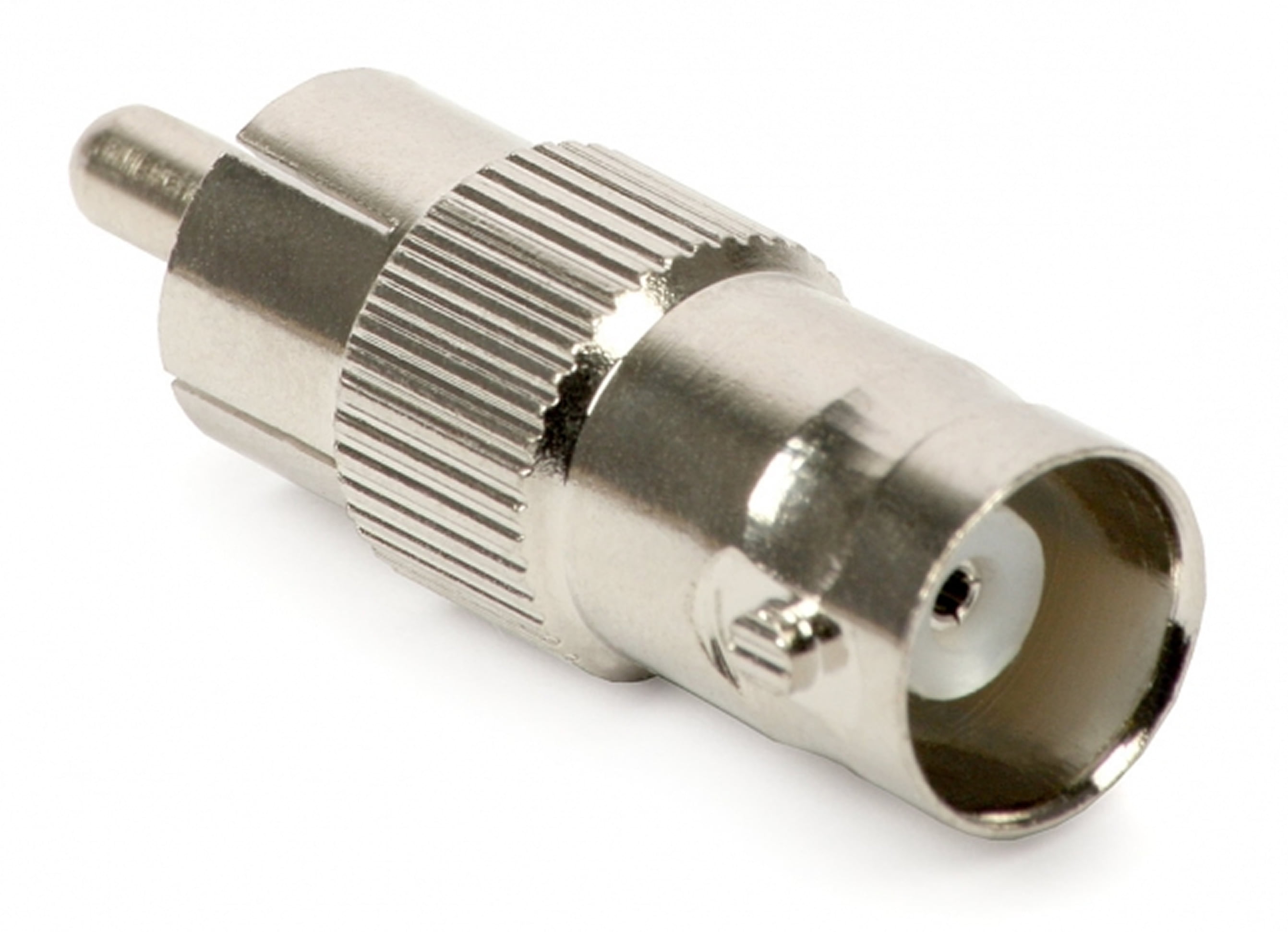

For plain CD-DA (ordinary nonrecordable CDs), the L-bit is not defined, and recording is prevented by alternating bit 2 at a rate of 4–10 Hz. The L-bit polarity depends on the category, with recording allowed if it is 1 for DVD-R and DVD-RW, but 0 for CD-R, CD-RW, and DVD. The L-bit is only used if bit 2 is zero, meaning copy-restricted audio.

BNC RCA CONNECTOR PLUS
S/PDIF is meant to be used for transmitting 20-bit audio data streams plus other related information. Instead, the data is sent using biphase mark code, which has either one or two transitions for every bit, allowing the original word clock to be extracted from the signal itself. In order to support both systems, as well as others that might be needed, the format has no defined bit rate. S/PDIF is used to transmit digital signals in a number of formats, the most common being the 48 kHz sample rate format (used in Digital Audio Tape) and the 44.1 kHz format, used in CD audio. Comparison of AES3 and S/PDIF Ģ0 bits (24 bits optional) Signals transmitted over consumer-grade TOSLINK connections are identical in content to those transmitted over coaxial connectors, though TOSLINK S/PDIF commonly exhibits higher jitter. S/PDIF uses 75 Ω coaxial cable while AES3 uses 110 Ω balanced twisted pair. The RCA connectors are typically colour-coded orange to differentiate from other RCA connector uses such as composite video. S/PDIF is nearly identical at the protocol level, but uses either coaxial cable (with RCA connectors) or optical fibre ( TOSLINK i.e., F05 or EIAJ optical), both of which cost less than the XLR connection used by AES3. This resulted from the desire of the various stakeholders to have at least sufficient similarities between the two interfaces to allow the use of the same, or very similar, designs for interfacing ICs.
BNC RCA CONNECTOR PROFESSIONAL
S/PDIF was developed at the same time as the main standard, AES3, used to interconnect professional audio equipment in the professional audio field. This mode is used to connect the output of a Blu-ray, DVD player or computer, via optical or coax, to a home theatre amplifying receiver that supports Dolby Digital or DTS decoding.ĭigital Audio Coaxial RCA connector (orange) The S/PDIF interface is also used to carry compressed digital audio for surround sound as defined by the IEC 61937 standard. Applications Ī common use is to carry two channels of uncompressed digital audio from a CD player to an amplifying receiver. S/PDIF is standardized in IEC 60958 as IEC 60958 type II (IEC 958 before 1998). Sony and Philips were the primary designers of S/PDIF. The name stands for Sony/Philips Digital Interconnect Format but is also known as Sony/Philips Digital Interface. S/PDIF is a data link layer protocol as well as a set of physical layer specifications for carrying digital audio signals over either optical or electrical cable. S/PDIF can carry two channels of uncompressed PCM audio or compressed 5.1 surround sound (such as DTS audio codec or Dolby Digital codec) it cannot support lossless surround formats that require greater bandwidth. S/PDIF is based on the AES3 interconnect standard. S/PDIF interconnects components in home theaters and other digital high-fidelity systems.

The signal is transmitted over either a coaxial cable (using RCA or BNC connectors) or a fiber optic cable with TOSLINK connectors. S/PDIF ( Sony/Philips Digital Interface) is a type of digital audio interface used in consumer audio equipment to output audio over relatively short distances.


 0 kommentar(er)
0 kommentar(er)
